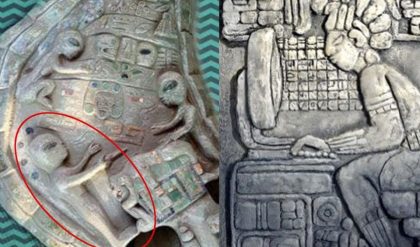The disappearance of Malaysia Airlines Flight 370 on March 8, 2014, has remained one of the most enigmatic and tragic events in aviation history. For years, the world has been captivated by the mystery of what happened to the Boeing 777-200ER and its 239 passengers and crew. Recently, the use of advanced underwater drones has shed new light on the mystery, offering tantalizing clues and renewing hope for solving one of aviation’s greatest puzzles.

The Disappearance and Search Efforts
Flight Details:
MH370 took off from Kuala Lumpur International Airport at 12:41 AM local time, headed for Beijing Capital International Airport. The flight proceeded normally for the first 40 minutes.
Last Contact:
At 1:19 AM, the co-pilot signed off with, “Good night Malaysian Three Seven Zero.” Shortly afterward, the aircraft’s transponder was switched off, and it vanished from civilian radar. Military radar later tracked the plane deviating from its planned route, turning westward across the Malay Peninsula and into the southern Indian Ocean.
Initial Search:
The search for MH370 initially focused on the South China Sea but was redirected to the southern Indian Ocean based on satellite data indicating that the plane continued flying for several hours after losing contact. The search area spanned a vast and remote part of the ocean, complicating efforts to locate the wreckage.

The Role of Underwater Drones
Advanced Technology:
The deployment of advanced underwater drones has been a game-changer in the search for MH370. Equipped with high-resolution sonar, cameras, and sophisticated mapping capabilities, these drones can explore the ocean floor in great detail, reaching depths that were previously inaccessible.
Ocean Infinity Mission:
In 2018, the private company Ocean Infinity launched an extensive search using a fleet of autonomous underwater vehicles (AUVs). These AUVs scoured a significant portion of the seabed, collecting valuable data and creating detailed maps of the search area.
Breakthrough Discoveries
Debris Findings:
The underwater drones have been instrumental in locating debris linked to MH370. While the main wreckage has not yet been found, several pieces of the aircraft have washed ashore on islands in the western Indian Ocean. These discoveries have provided critical clues about the plane’s final moments.
Detailed Mapping:
The drones’ detailed mapping of the ocean floor has uncovered previously unknown features, such as underwater ridges, valleys, and volcanic formations. These maps are not only valuable for the MH370 search but also contribute to our understanding of the ocean’s geology.
Renewed Hope and Theories
New Analysis:
The data collected by underwater drones has led to renewed analysis and speculation about the plane’s final flight path and crash site. Experts are re-examining satellite data, debris drift patterns, and ocean currents to refine search areas and theories about what happened.

Controlled Ditching:
One theory gaining traction is that MH370 experienced a controlled ditching into the ocean. The condition of some recovered debris suggests that the plane may have glided into the water rather than crashing at high speed, which would align with the lack of large floating debris fields.
The Impact and Future Search
Ongoing Efforts:
Despite the challenges and setbacks, the search for MH370 continues. The dedication of search teams, technological advancements, and international cooperation remain key to potentially solving this mystery.
Aviation Safety:
The disappearance of MH370 has led to significant improvements in aviation safety and tracking. New regulations require more frequent position reporting and the use of enhanced tracking technologies, ensuring that future flights can be monitored more closely.
Conclusion
The use of underwater drones has brought new hope and insights into the mystery of Malaysia Airlines Flight 370. While the main wreckage remains elusive, the advancements in technology and the persistent efforts of search teams keep the quest for answers alive. As the search continues, the data gathered by these sophisticated machines may one day lead to the resolution of one of aviation’s most enduring mysteries, bringing closure to the families of those lost and enhancing the safety of future air travel.





